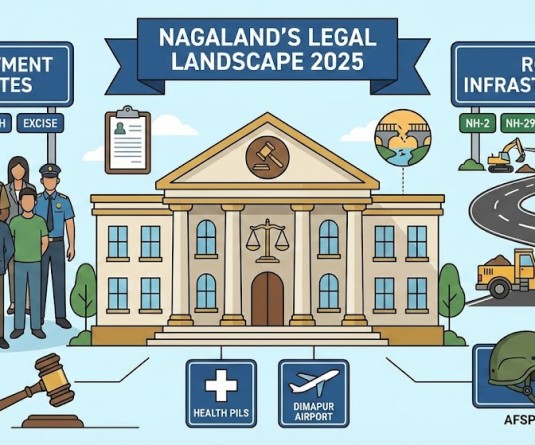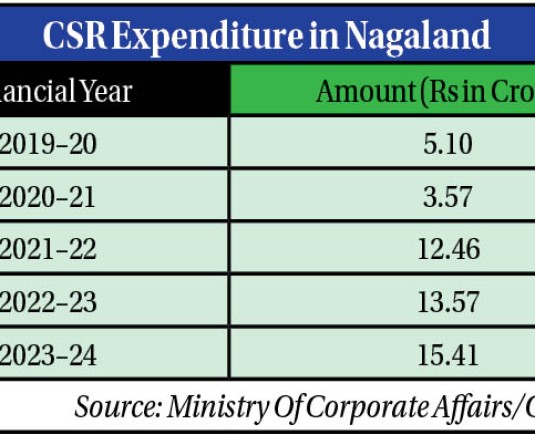Data Source: Sample Registration System Bulletins (Various Years), Registrar General of India.

Moa Jamir
Dimapur | May 12
In a concerning trend, the infant mortality rate (IMR) in Nagaland has risen consecutively for two years, reversing years of significant improvement.
As per the latest Sample Registration System (SRS) bulletin for 2021, released by the Registrar General of India (RGI) on May 5, Nagaland’s IMR increased from 4 in 2020 to 7 in 2021.
This is just the second time in the past decade that the rate has risen, according to an analysis of previous years' SRS Bulletins by The Morung Express since 2011.
The first increase was in 2020, when it rose slightly to 4.

The Infant Mortality Rate (IMR), or the “infant deaths (less than one year) per thousand live births in a given time period and for a given region,” is widely accepted as a crude indicator of the overall health scenario of a country or region, the RGI noted.
Nagaland recorded its lowest Infant Mortality Rate (IMR) in 2019, at just 3 infant deaths per 1,000 live births.
However, it rose to 4 in 2020 and further to 7 in 2021. While the increase is modest in absolute terms, it reflects a significant 75% year-on-year rise.
The SRS Bulletins from 2011 to 2020 indicated a consistent decline in Nagaland’s IMR—from 21 in 2011 to single digits by 2017 (IMR of 7). The sharpest drop was seen in 2019 at 3, marking an 85.71% decrease over a decade.
Accordingly, in 2018 (4) and 2019, Nagaland had the lowest IMR in the country.
However, in 2020, Mizoram took over that position with an IMR of 3, while Nagaland’s rose slightly to 4. The national average stood at 28. In 2021, Mizoram, Sikkim, and Manipur shared the lowest IMR at 4. Goa and Puducherry followed with 5, and Kerala at 6.
Nationally, Madhya Pradesh had the highest IMR in 2021 at 41, followed by Chhattisgarh (38) and Uttar Pradesh (37). Among North-Eastern states, Meghalaya reported the highest IMR at 30, followed by Arunachal Pradesh (21) and Tripura (19).
The national average IMR continued to decline, dropping to 27 in 2021 from 28 in 2020.
Gender and Rural-Urban Concerns for Nagaland
The IMR in Nagaland, compared to earlier highs and the national average, is still low, and the decline over the years can be considered a significant public health achievement.
However, the latest SRS Bulletin also highlighted stark disparities along gender and rural-urban lines.
The IMR for female infants in the state doubled within a year—from 5 in 2020 to 10 in 2021—contributing significantly to the overall rise. In contrast, the male IMR remained unchanged at 3.
Urban-rural differences have also emerged. While urban IMR was undefined in 2020, it was reported at 4 in 2021. In rural areas, the IMR rose from 7 to 8 over the same period.
This means the rural IMR is now twice that of urban areas, pointing to persistent challenges in healthcare access and systemic inequities in rural Nagaland.
Meanwhile, Nagaland’s estimated Birth Rate (Births per Thousand Population) stood at 12.6 in 2021, more or less similar to 12.5 in 2020.
However, the total Death Rate (Deaths per Thousand Population) increased from 3.7 to 6 during the same period.
Accordingly, the Natural Growth Rate (population changes without migration) fell from 8.8 in 2020 to 6 in 2021.
The all-India averages for Birth Rate, Death Rate, and Natural Growth Rate in 2021 were 19.3, 7.5, and 11.8 respectively.
The SRS, a large-scale demographic survey conducted annually by the RGI, “provides reliable annual estimates of infant mortality rate, birth rate, death rate and other fertility & mortality indicators at the national and sub-national levels.”






